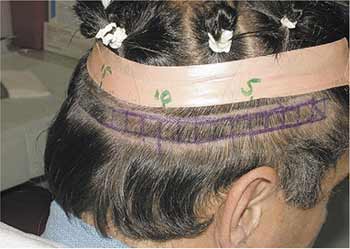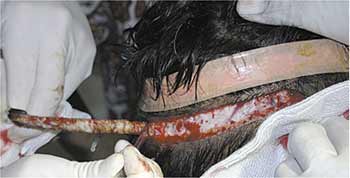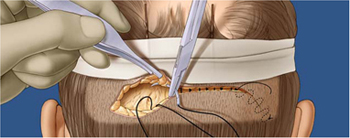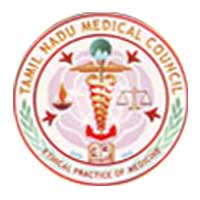Hair Transplantation Surgery
Scalp hair plays a vital role in changing the appearance of once face. As the hair becomes thinner and falls, an individual looks aged compared to their chronological age. Both men and women can suffer from “Androgenic Alopecia”. This means hair loss is due to the influence of Androgens (break-down products of Male and female hormones”. These Androgens act on the hair follicles present in the temporary zone and make them burnt out. These follicles can no longer enter into growth phase after this.
Temporary Zone includes the front, centre and upper back of the scalp. Permanent zone comprise the sides and back of scalp. Approximately 1,00000 hairs in the temporary zone are prone for permanent loss. However only approximately 10,000 hairs are available in the permanent zone of which two thirds could be harvested in several sitting for transplant. Hair transplant will not stop further hair fall and it could only replenish hair in the areas permanently devoid of hair. If the donor hair is insufficient than body hair could be transplanted from areas like beard, chest, axilla and pubic areas.
Medical management plays a vital role in both preventing hair fall and reaching the state of baldness and also enhance the re-growth of transplanted hair. Minoxidil and Finestride are two FDA approved medication for hair fall. In- addition vitamins, growth factors and PRP serum may be required for improving the quality of existing and transplanted hair.
Hair transplantation is a surgical procedure performed under local anaesthesia. Currently “Micro Follicular Graft” technique with “STRIP” or “FUE” method of harvesting is widely practised. The two methods only differ in the method of harvesting. The number of Grafts needed depends on the area of baldness. The number of grafts transplanted depends both on area of baldness and donor area. As many as 3500 grafts could be transplanted per session lasting for 8 to 10 hours.
Hair transplantation has minor side effects like swelling around the eyes for 4 to 5 days with temporary numbness of scalp. In the strip method there would be a permanent linear scar at the back hidden within the permanent hairs. FUE is relatively scar less, less painful but more expensive because of the time consumed for a single session. In FUE the patient must be prepared to lie on his tummy for two to three hours continuously.
Hair transplant procedure is performed as day surgery and the patient could leave town the following day after a single session. Routine work could be resumed after 4 days. Hair wash is recommended after three days.
Medical Management Before considering a surgical approach to a patient's alopecia, any treat¬able etiologic factors should be eliminated. Endocrinopathies associated with hair loss should be appropriately managed. Scalp infections need to be properly diagnosed and treated. Numerous topical and oral treatments for androgenetic hair loss claim hair regrowth. Only two therapies, topical minoxidil and oral finasteride , have been clinically proven to be effec¬tive for preventing further hair loss and promoting future growth. Both drugs affect the hair growth cycle via different mechanisms of action and result in an increase in existing hairs' length and diameter. Because hair loss is a progressive disease, medical treatment is required even for the individual who is contemplating hair restoration surgery. These medications slow the progression of hair loss. Their major limitation, other thanongoing cost, is that once they are stopped, the patient's hair loss will revert to the starting pattern,that is, everything he gained during the period he was on the medications is lost.
Surgical Management Surgical options for alopecia have ranged from individual follicular-unit hair graft transplantation to scalp reductions and axial flap transfers. The goals of surgery are to create a natural-appearing hairline, increase scalp coverage, and to camouflage scars if present. In addition, the patient must be informed that usually two to four grafting sessions may be required to recreate a substantial anterior hairline and an increase in hair density. Although the patient may be satisfied by the results of a single extensive transplant session, we stress that it is unlikely for hair restoration to be completed with the first operation.
Follicular-Unit Hair Transplantation Hair transplantation with hair grafts (based on the follicular unit) has been modified over the last two decades to become the established method of choice for hair restoration. Earlier grafting techniques depended on harvesting 15- to 20-hair, 4-mm round punch grafts, which evolved into 3- to 6-hair minigrafts, single-hair micrografts, and currently follicular unit grafts. In this technique hair follicles are harvested as a strip from the back of scalp (permanent Zone) and after separation into individual follicles are inserted over areas of baldness using the stick and place technique.
Follicular-Unit Extraction In the past 4 years, there has been an increasing interest in harvesting follicular-unit grafts individually so as not to have a linear scar in the donor site as occurs in standard strip harvesting. The follicular unit is extracted, trying not to damage it or the surround¬ing follicles. Transplanting to the recipient area is directed by a "stick and place" method.
Dr. Jayanthy is trained specialising in this technique and has her certification from the centre in India with affiliation to the Hair Sciences Centre in Colorado, USA. This technique is virtually painless / scarless compared to FUT hair transplantation.














Complications Complications from follicular-unit transplantation are uncommon. Poor results can be due to inappropriate design and technique. A hair¬line placed too low is often done in accordance with a patient's requests; In addition, telogen effluvium (temporary hair loss, "shock loss") may occur in both donor and recipient regions as a result of the surgical manipulation of the adjacent hairs. The patient must be informed of this possibility before undergoing the procedure, and he or she needs to be reassured that hair regrowth is expected in approxi¬mately 3 months, along with the growth of the transplanted hairs. Epidermal cysts and ingrown hairs are the most common complication from 6 to 14 weeks post transplant; these require unroofing with a needle tip. Temporary hypoesthesia is possible, primarily in the regions that are cephalad to the harvested donor strip. Scarring is usually minimal. However, with repeated harvests some donor site scars—primarily in the lateral occipital regions—may widen with time. Graft survival may decrease slightly during subsequent sessions as a result of scarring and altered vascularity at the recipient sites.
Patient Information. Hair Transplant is done as a day surgery and patient is sent home immediately after surgery. Sutures at the back of hair is removed after two weeks. First hair wash is allowed on the 3rd post operative day. Medical treatment to be resumed after the first week of surgery.
Cost for FUT Half Strip 40 thousand INR
Three forth strip 60 thousand INR
Full strip 90 thousand INR
Cost for FUE 80INR per graft











